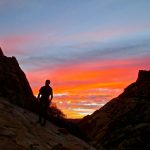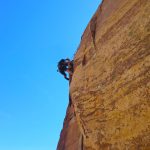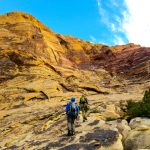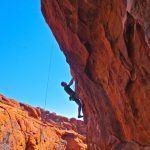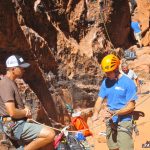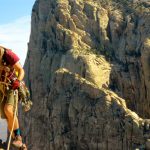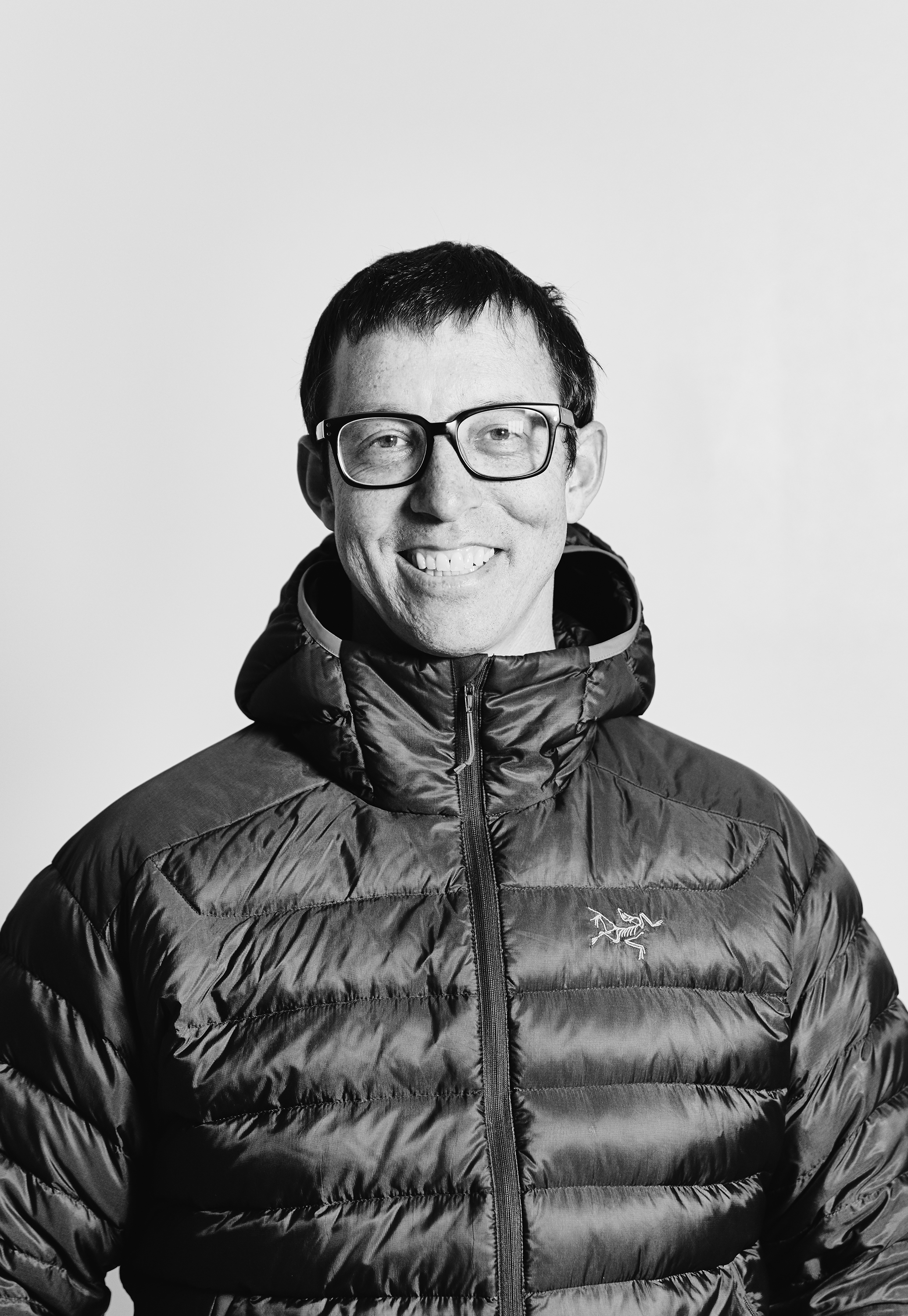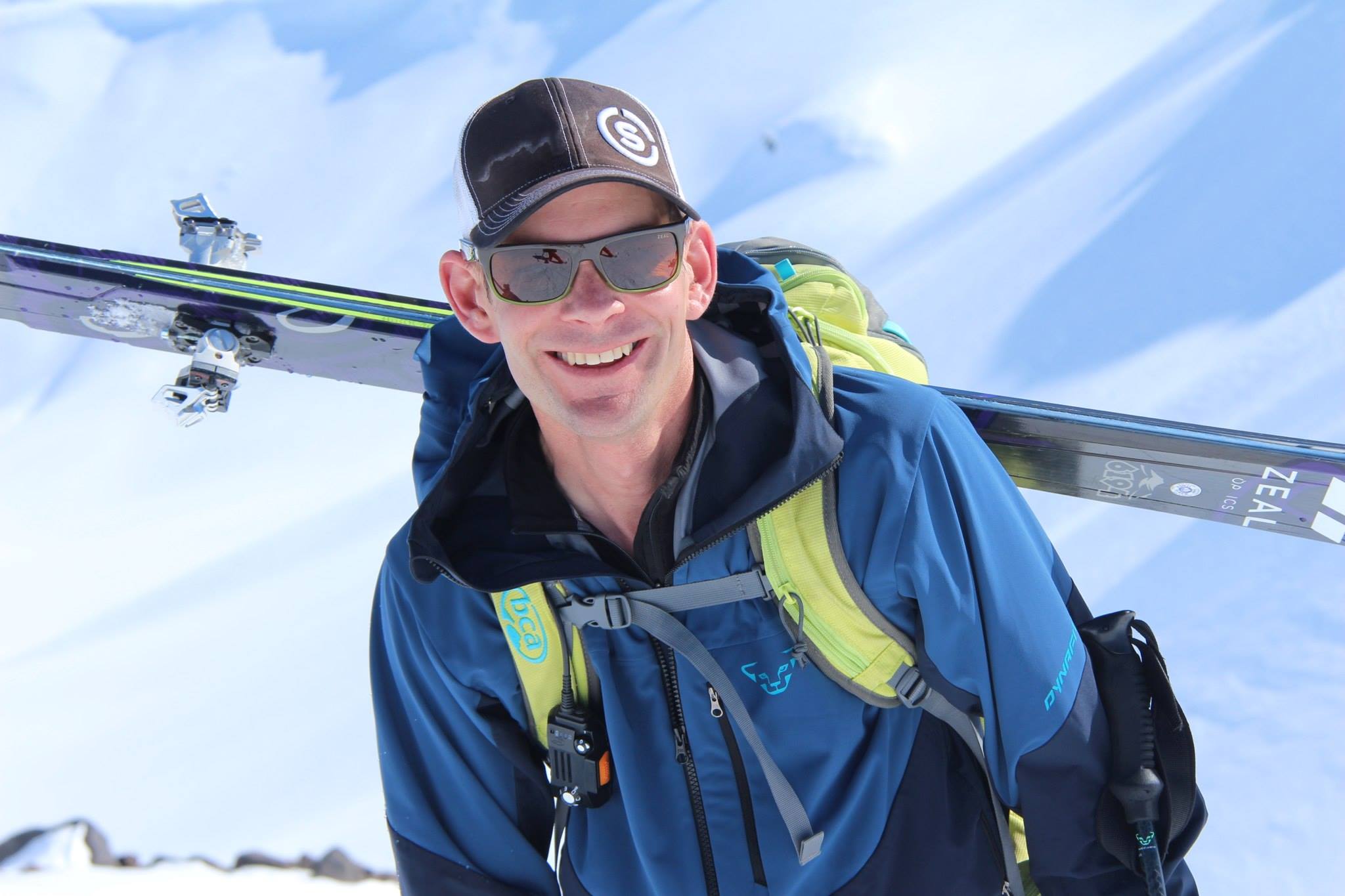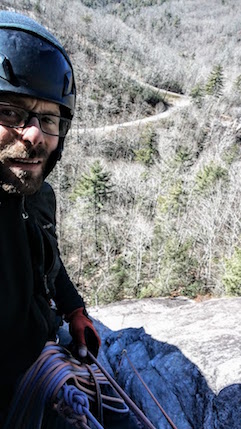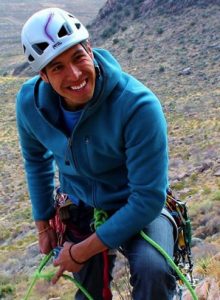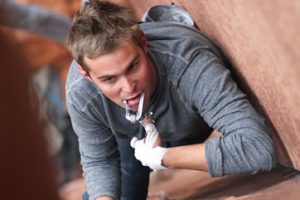Brooks Range Scholarship Recipient Adam Butterfield
AMGA RGE Scholarship from Adam Butterfield on Vimeo.
By Adam Butterfield, Certified Rock Guide and recipient of the Brooks Range Scholarship
The road back from injury is hard both physically, and mentally. Having seriously injured the TFCC (Triangular Fibrocartilage Complex) while climbing last fall I was now well into four months of post-surgery rehab. I was feeling broken and wasn’t sure where guiding was going. This last winter has been a long journey of practice, patience, and commitment. In spite of my determination to get back to the rock I must admit that even to this day, the thought of a long-term injury is constantly on my mind.
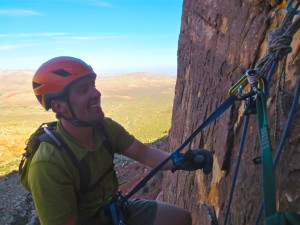
Drew Daly smiles as he prepares for descent on Triassic Sands
Walking back from my retail job to my apartment on a crisp Colorado evening I checked my email simply to pass my boredom. The AMGA scholarships had already been given out a few weeks prior, and I had not gotten one. To my surprise I had a new message from Valerie telling me that there had been some changes in the scholarships and she was wondering if I was interested in a full tuition scholarship from Brooks-Range Mountaineering. “YES, please,” it took me less than a second to respond!
With renewed vigor I kept at my rehab, and with the arrival of spring headed up to Washington’s fabled Enchantments for the summer which I knew demanded a lot of training hours on big rock routes. My employer, Northwest Mountain School, was psyched to help me prepare. I had the opportunity to guide many classic grade III to IV rock routes in and around Leavenworth, Wash. One of my favorite routes this summer has been the Backbone Ridge on Dragontail Peak. The route consists of a 2- to 3-hour hike through aromatic fir and ever steepening switchbacks abruptly culminating at Colchuck Lake, which reflects the grandeur of the toothed granite ridge. Two thousand feet of climbing up to 5.9 offwidth takes you to the summit. The climbing involves a lot of mixed 3rd and 4th class exposed climbing in between 5th class sections. Descending the south side you pass a small pocket glacier and hike back down on scree for a few more hours. Though this route and many others in the area skim the edge of rock vs alpine terrain, it became a great training ground for dialing terrain assessment and moving efficiently with guests on big days.
As I loaded up my green van for my drive down to Red Rocks I was feeling like I had a successful summer, but my nagging pulley injury was still a lingering concern. I had kept up my rehabilitation exercises, but knew that my wrist was still not one hundred percent. Knowing my rock exam was coming, my wrist had to be in peak form. Unfortunately, it wasn’t and people would be counting on me. I needed to get in the zone. While most other examinees were climbing popular guided routes I went off to less known routes with my best friends, climbing and short roping when necessary. I felt smooth on the rock, though as the first day approached I could feel the pre-exam butterflies emerging.
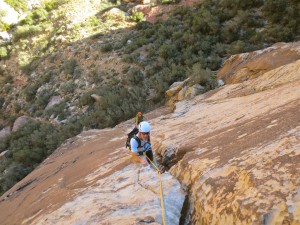
Mike Poborsky and Drew Daly climb the second pitch of Wholesome Fullback
The first day helped settle my nerves climbing with Drew Daly and Mike Poborsky on Whiskey Peak’s Wholesome Fullback and Triassic Sands. The climbs went well, and it was great to get examined on climbs that I had already climbed.
On the second day of my exam we were prepared to do Sour Mash at the Black Velvet Wall with Rob Hess. As we got to the base there was already a party of two getting situated. Snaked! We switched objectives and climbed Refried Brains, which was also on the Black Velvet Wall. With limited beta and less than ideal gear for the route we climbed on.
For day three we were assigned Cold Front a new route put up on the Jet Stream wall in 2013 rated at 5.12b. Intimidated at the route selection and further humbled by the overwhelming talk with the students who had done it the day prior, we made the call to bail the morning of and instead linked Slot Machine to Edge Dressing to Heart of Darkness on Mescalito and descended Peyote Power. Hard climbing with small gear kept my heart pounding. Blinded by adrenaline I missed a possible belay just past the 5.11c crux that Dale wanted to free. If I paid better attention to cues and client reward I would have hauled packs or even gone caterpillar. Unfortunately, I had my blinders on and was so focused on the climbing that I overlooked how my clients were going to send.

John Mackinnon and Mike Poborsky approach the Eagle Wall in Oak Creek Canyon.
Searching for shade on day four, we spent our time in the Black Corridor and the Sweat Pain Wall showing the examiners that we could climb a variety of 5.11- and 5.10+ routes as well as teach various topics ranging from movement skills to alternative methods of rappelling without a plate device.
On the fifth day, before the sun had crested the mountains of Red Rock, John Mackinnon, Mike Poborsky, and I were off hiking to the famous Rainbow Buttress. John started the day short-roping us up the direct-direct approach, involving many third and fourth-class sections. Bringing us halfway up the wall John and I switched leads, and I took us up and over and descended down the Chicken Lips descent. Navigating through the new terrain was probably my biggest challenge. Trying to be smooth during various rappel transitions I lost time after getting my rope stuck twice. Finding my flow late in the game, we eventually sped through the easy terrain and back to the car just before sunset.
At the end of the exam I realized I may not have been perfect. In day-to-day guiding we make subtle mistakes that might not have drastic consequences, but that do slow down the pace of the day or decrease the reward for our guests. Part of guiding is to keep moving forward and to problem solve. I greatly appreciate the feedback and critiques from the instructors. I felt I learned more in five days of this exam than I had in the past year of guiding. I am psyched that I passed the exam and feel confident in the terrain I am certified to guide in, especially with a less than perfect wrist. I’m excited for the next step in my education. Thanks for the critiques and advice Rob, Dale, and Mike. I appreciate all the help you guys gave me.
- Morning glow sillouetting John Mackinnon on the way up to Rainbow Buttress in Oak Creek Canyon
- Mike Poborsky sends the crux of Triassic Sands
- Mike Poborsky and Drew Daly climb the second pitch of Wholesome Fullback
- John Mackinnon and Mike Poborsky approach the Eagle Wall in Oak Creek Canyon
- Drew Daly smiles as he prepares for descent on Triassic Sands
- Dale Remsberg runs laps on Glitter Gulch on the Sweet Pain Wall
- Dale Remsberg floats Edge Dressing on Mescalito
- Adam Butterfield teaches Dale how to use a Mammut Alpine Smart belay device
- Adam Butterfield scouting the descent for Chicken Lips on the Upper Painted Bowl

